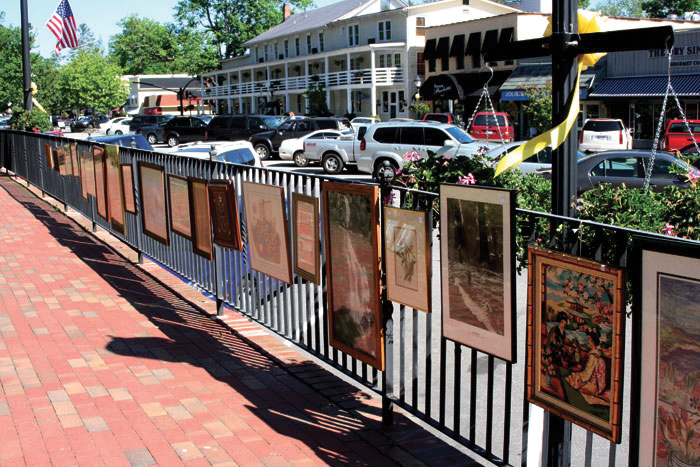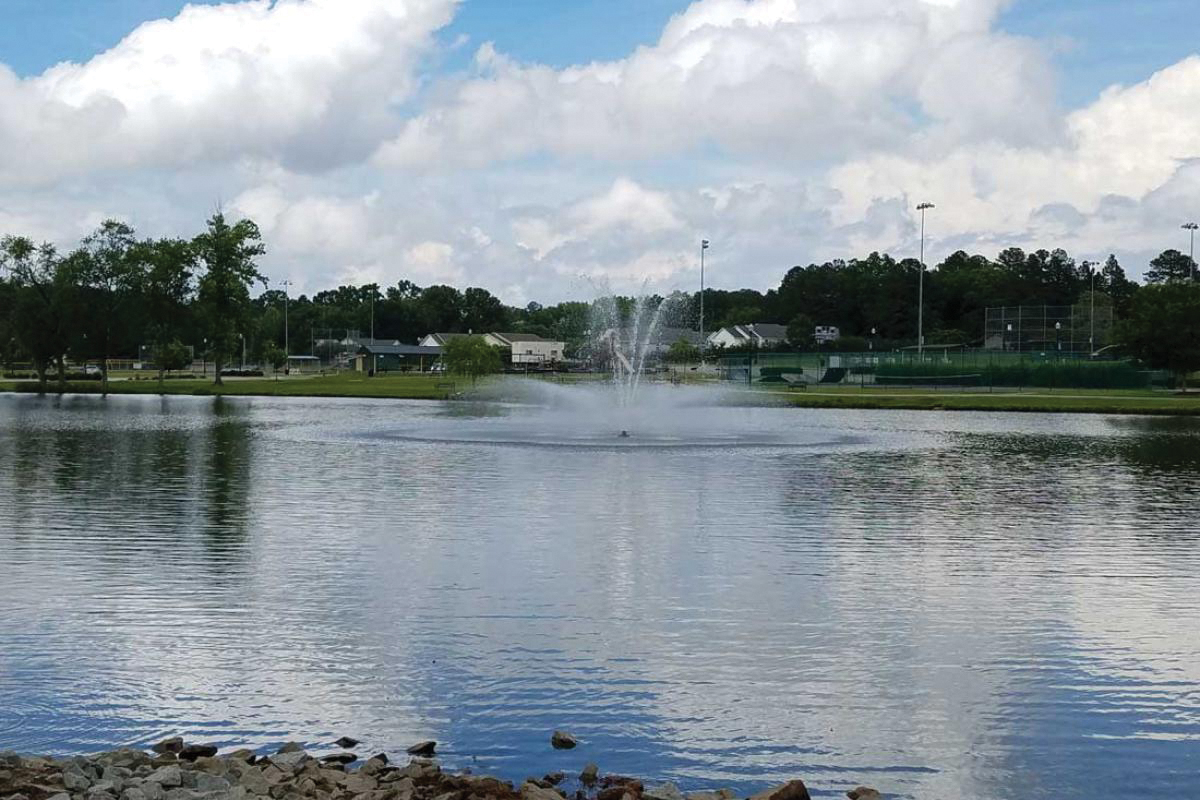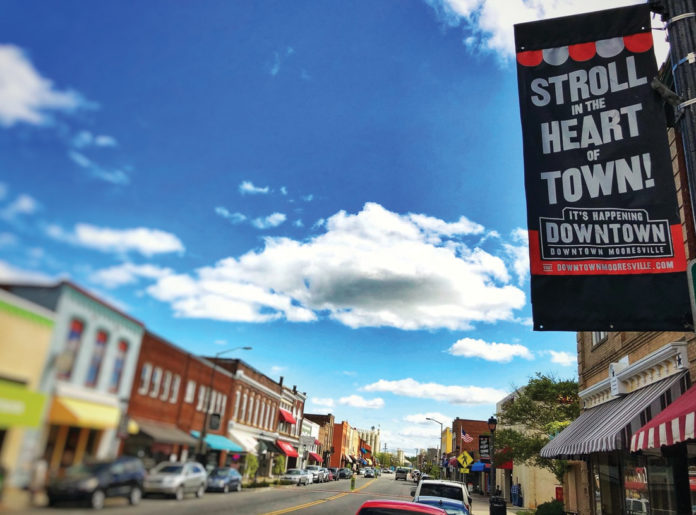The American Rescue Plan offers a generational opportunity for our municipalities, not just to recover from the pandemic, but to thrive well into the future. It is this forward-looking aspect of the ARP that is most consequential. How best can we utilize this money to create a lasting impact?
All across North Carolina, cities and towns are developing plans and programs specifically geared towards this question, and history shows us that these projects will be successful. When our municipalities receive financial support, they achieve substantial successes. Cities get the job done.
This ongoing series will showcase those projects, plans, and transformational investments, both to highlight the end-to-end impressive work of our municipalities and to share best practices with other cities and towns.
 Mooresville: Meeting Both Immediate and Long-Term Needs
Mooresville: Meeting Both Immediate and Long-Term Needs
Mooresville, NC
Population: 50,193
Funds Received: $12.47 million
Plan
- Capital Investment: Liberty Park Outdoor Recreation Improvement
- Employee Premium Pay
- Employee Vaccination Incentive
- Funding outside organizations most affected by the pandemic
Mooresville’s decided-upon investments will be made solely with the town’s first tranche of ARP funds, totaling approximately $6.2 million. Additional projects, if approved, will be funded using the town’s second tranche. Ideas under consideration include cybersecurity, transportation, and additional support to organizations serving those most affected by COVID-19.
Strategy
- Make long-term impact through investments in infrastructure
- Address immediate pandemic-related needs
- Promptly allocate first tranche of ARP funds; leave second tranche of funds flexible and continue to consider local needs
Mooresville is a rapidly growing town that has seen its population balloon more than 53% over the last 10 years. With that level of growth comes both challenges and opportunity. There is the need for significant infrastructural investments to meet the demands of the growing population, and through those needed investments, there is the unique occasion to set the town up for success through well-planned and transformational improvements.
Local leaders are proving up to the task. Mooresville’s ARP plan hits the mark on both long- and short-term issues.
“We have tremendous capital needs for the next five years as a growing community, so we look for opportunities where the ARP funds could fill in the gaps,” said Assistant Town Manager Beau Falgout. “How can these funds be leveraged to do those capital projects to have a long-lasting impact?”
Towards the long-term vision, the majority of first tranche funds is going towards a capital project—Liberty Park. That project has been a long-held goal of the town, and will include trail improvements, playground improvements, water features, multi-use facilities, and overall site improvements. The rapidly growing community necessitated increased and improved public space, and that goal took on added significance with the need for outdoor places due to the pandemic.
In the short-term, Mooresville focused on COVID-specific actions: vaccine incentives, employee premium pay, and outside funding to areas of the community most impacted by the pandemic. Both these initiatives and the Liberty Park project are funded by Mooresville’s first tranche. The town’s second tranche has not yet been allocated.
“We’ve developed a plan, then left some flexibility for the second tranche,” said Falgout. “The first tranche addresses immediate needs and closes some funding gaps to have long-term impact.”
Administration
Website. Mooresville’s plan has been transparently communicated to its citizens through the town’s ARP webpage. This site contains both information on the federal legislation, exact funding amounts towards each project, and contact information for public input.
Citizen engagement. Funds in both tranches are dedicated towards funding outside agencies addressing those most impacted by the pandemic, and the town has created a website to receive feedback on that topic. The town has accepted public input throughout the process, and that contact information has been made readily available.
Decision-making process. “We did not create projects out of the blue,” Falgout said. The Liberty Park project was already a decided-upon investment prior to receiving ARP funds. Additionally, the town put together an internal committee to vet each proposal, and each idea was thoroughly discussed by the Town Board of Commissioners.
Justification. To meet the requirements of eligible expenditures under U.S. Treasury guidance, Mooresville has provided justification for each approved expense in its Grant Project Ordinances, which are linked below.
Accounting, reporting, oversight. Mooresville tentatively plans to either hire or contract out assistance to oversee the reporting requirements associated with ARP.
 Highlands: Tackling Critical Water Investments
Highlands: Tackling Critical Water Investments
Highlands, NC
Population: 1,065
Funds Received: $312,000
Plan
- Moore Wood Waterline Replacement Project
Strategy
- Focus on the area’s biggest need—water infrastructure—by completing a critical capital project
- Focus on previously targeted projects, to provide budget relief
Highlands is one of western North Carolina’s preeminent tourist destinations. However, with a limited number of full-time residents, the total ARP funding for the town is relatively small, especially considering the scope of the community’s economic activity and the infrastructural network that supports it. So, local leaders focused only on the most important project: water.
The Moore Wood Waterline Replacement Project was already in the plans for Highlands. It will replace and upgrade a water line in a critical area. The town has dedicated all of its ARP funds to the project.
“We didn’t get as much as some places did,” said Town Manager Josh Ward. “But, like a lot of municipalities, we have water needs.”
ARP funds will cover about three-quarters of the total project’s cost, said Ward, and it is clearly eligible under ARP guidance. Additionally, since the project was already budgeted for, these funds will provide relief for other infrastructure projects in the town’s plans. “We had this project in the budget,” said Ward. “We were going to have to pay for it anyway, so it was perfect receiving the money when we did.”
Administration
Efficiency. While a booming town for visitors, Highlands hosts only about 1,000 fulltime residents. Thus, its ARP distribution was relatively small. To get the most of those funds, town leaders leveraged their pre-ARP preparations and targeted a project already in focus for the community. By doing so, they saved on resources, did not need to hire outside accounting or consulting help, and quickened the decision-making process. Most importantly, they ensured that every ARP dollar received went directly to the infrastructure investment.
Reporting and accounting. Though not the only infrastructure project in Highland’s plans, the Moore Wood Waterline Replacement was the one most clearly eligible under ARP spending guidelines. By prioritizing it, Highlands has simplified its reporting responsibilities, while still freeing up budget space for other non-ARP expenditures.
Angier: Leveraging Funds, Partnerships to Meet Growing Needs
Angier, NC
Population: 5,265
Funds Received: $1.72 million
Plan
- Increase sewer capacity
Strategy
- Provide the necessary infrastructure to support the community’s rapid growth by focusing on critical service line: sewer capacity
- Partner with Harnett County
- Leverage additional money appropriated in state budget to complement ARP funds
Angier has seen approximately a 30% population increase over the past 10 years. That level of growth provides opportunities in regard to economic and community development; and it also brings challenges, as the municipality works to meet increased service needs. If there’s one thing local governments do, it is provide the infrastructure needed for communities to succeed. That is Angier’s goal, too.
Receiving more than $1.7 million in American Rescue Plan funds, Angier has made plans to invest in its sewer capacity. It is one of the most pressing needs of the area, and Town Manager Gerry Vincent estimates that Angier has fewer than five years left before its present capacity is exceeded. “We’re running out of capacity,” Vincent said. “We know that based on our growth.”
Presently, sewer service is provided by Harnett County through an agreement with Angier, and this additional investment will proceed through that same partnership. More than 1.25 million gallons of additional capacity is needed to meet Angier’s estimated growth, according to Manager Vincent, and that investment will cost approximately $8.75 million. Angier plans to leverage a few funding sources for this investment. In addition to the local ARP funds, Angier received $10 million of North Carolina’s ARP funds, appropriated by way of the 2021 state budget and to be spent towards water and sewer infrastructure projects.
Administration
Prioritization. Infrastructure needs take centerstage, especially for a growing community. Manager Vincent expects most, if not all, of the town’s ARP distribution to fund this sewer expansion.
Partnerships. As seen throughout the state, funding goes further when partnerships are formed. It also allows for streamlined administration of funds. While the exact means of sewer capacity expansion have yet to be determined, the existing partnership allows both Angier and Harnett County to pursue the most efficient route for that investment, whether that be the simple purchasing of additional capacity or an expansion of the county’s facilities.
Keep up to date on all of our ARP case studies on Here We Grow, at herewegrownc.org/case-studies.














